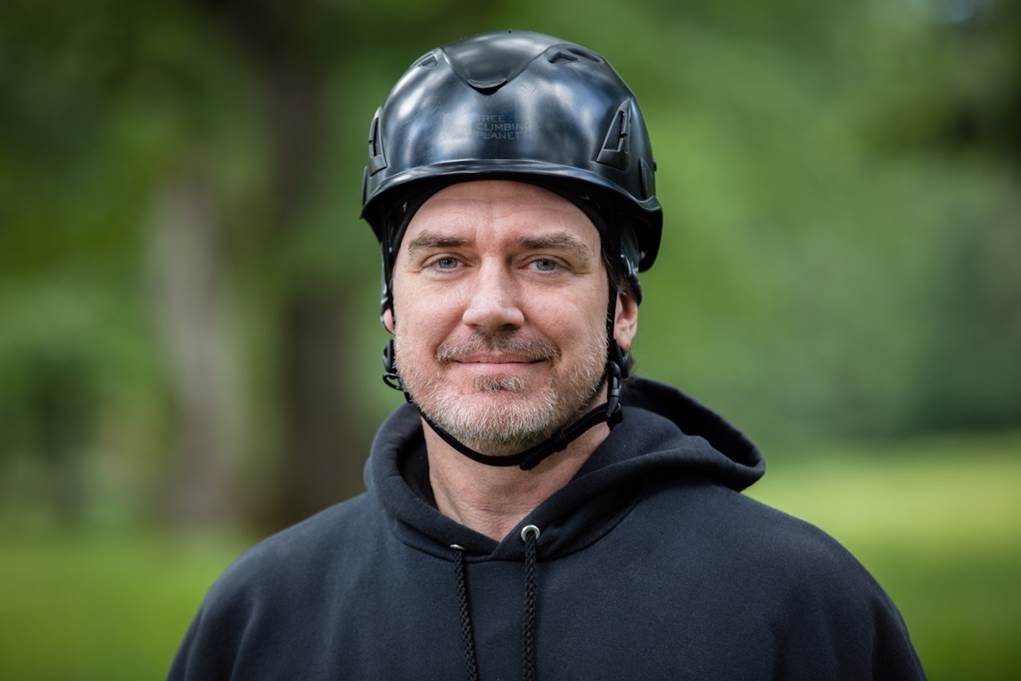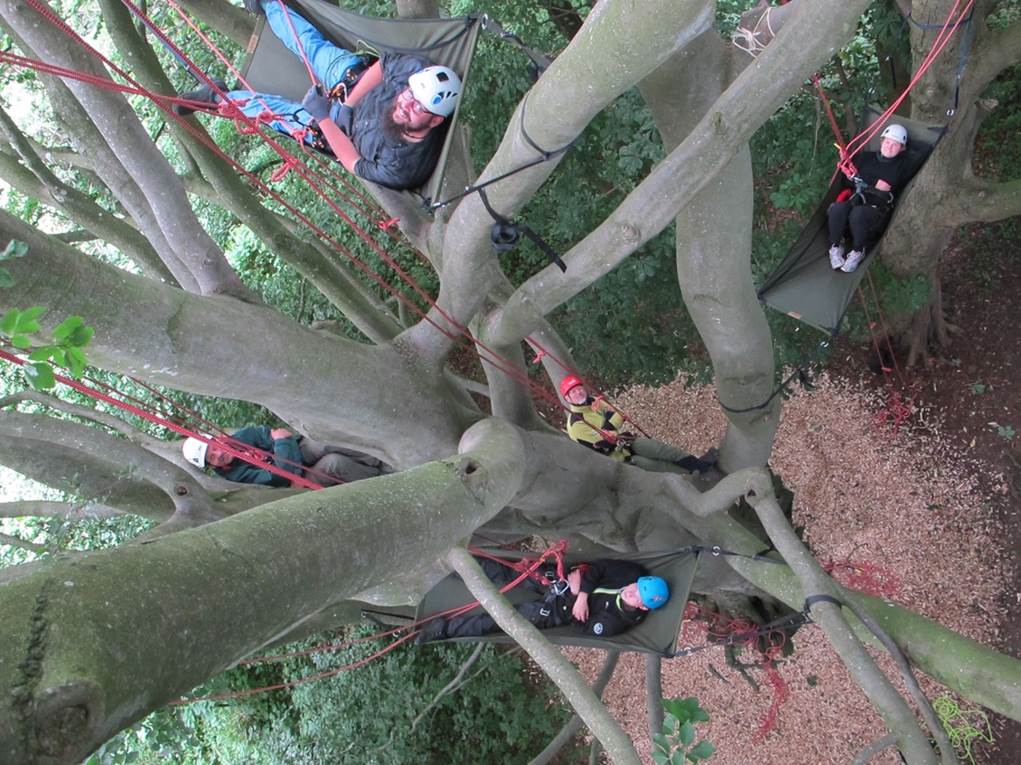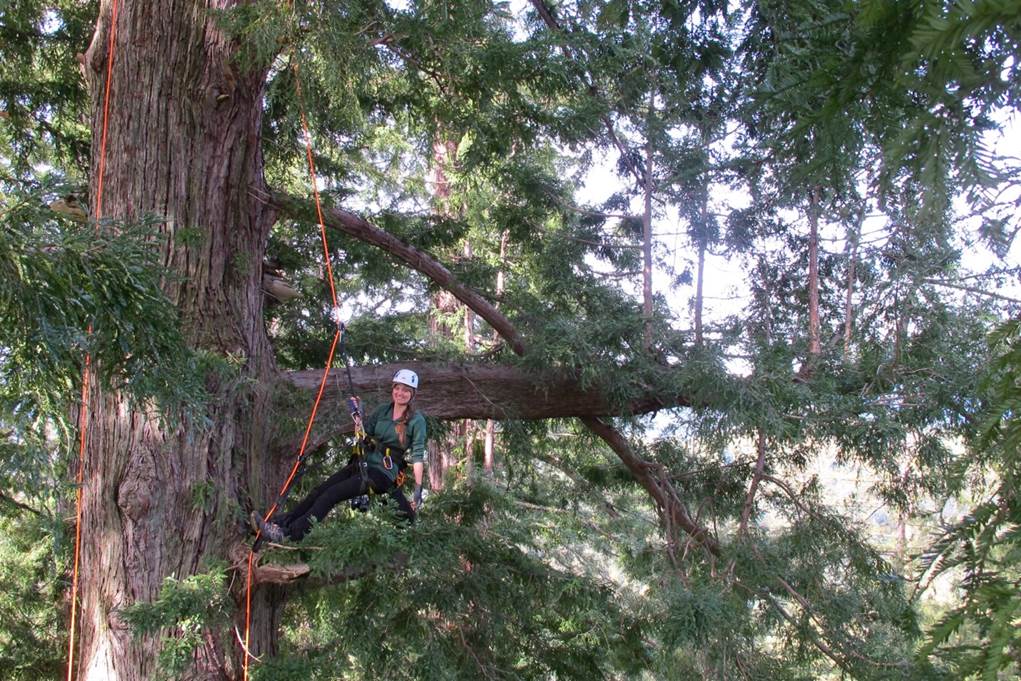
A master tree-climber shares a view from the top
A master tree-climber shares a view from the top
Tim Kovar is afraid of heights.
It wouldn’t be remarkable—most of us get a little nervous off the ground—except that Kovar makes a living teaching people how to climb trees. From the towering redwoods of the California coast to the steamy Amazon Basin, Kovar has introduced more than 10,000 people to tree climbing techniques for scientific research, exploration, and inspiration.
“It sounds nuts, I know,” Kovar laughs. “But I feel much more comfortable when I’m 300 feet up on a rope than I do 10 feet up on a ladder.” Kovar’s tree-climbing method uses ropes, harnesses, and safety devices to protect climbers from falls and minimize impact on the tree. “Once people get the hang of it, they can relax and start to discover a whole new world in the forest canopy.”
We caught up with Kovar at his home near Portland, Oregon, to find out what happens when you gain a higher perspective.
 “It sounds nuts, I know,” Kovar says. “But I feel much more comfortable when I’m 300 feet up on a rope than I do 10 feet up on a ladder.”Photo credit: Steve Lillegren
“It sounds nuts, I know,” Kovar says. “But I feel much more comfortable when I’m 300 feet up on a rope than I do 10 feet up on a ladder.”Photo credit: Steve Lillegren
Do you remember the first tree you climbed?
I grew up in small-town Nebraska and we had a couple of trees in our backyard. Most days after school you could find me up in one of them—even when I was a little kid, I knew the world was different when you’re looking at it from the top of a tree. When I grew up, I wanted a job that would let me be outside, close to that feeling. So I started working as an arborist for a small tree company in Atlanta, Georgia.
What made you switch from being an arborist to teaching tree-climbing?
Atlanta was also home to the world’s first recreational tree climbing school; I volunteered there. On one particular climb, we had about 10 people up in the limbs of this old live oak—a mix of elderly folks and kids, Republicans and Democrats—and I was surprised to find that everyone was just getting along. They were laughing with each other and talking about the trees they climbed, finding common ground from 40 feet up. It was that climb that motivated me to put down the chainsaw and spend all my time taking people up to the treetops.
 Friends in high places.Photo credit: Tim Kovar
Friends in high places.Photo credit: Tim Kovar
What drew you to Portland to start your new climbing school?
Back in 2003, I spent a couple days climbing in forests around Grants Pass in southern Oregon. At the end of the trip I was walking back out to the road thinking, Man, this is awesome, it’s so beautiful out here—and the first thing I saw when I emerged was a logging truck with one gigantic Douglas fir on the back of it. It felt like a sign saying, “You have to move out here and try to get people connected with their forests, before it’s too late.” That one tree—I have no idea where it came from, or where it was going—but it was a turning point in my life.
You say you teach inspirational tree climbing—rather than recreational tree climbing. What’s the difference?
People hear “recreation” and they think about using the ecosystem for their own benefit. “Inspiration” changes the motivation: tree climbing becomes a way to be, rather than a thing to do. It becomes more about receiving lessons from the ecosystem—being right here, right now. Once people get up in the canopy, their worldly problems seem to fade away. They’re not thinking about feeding the cat, beating traffic, or cleaning the sock drawer. For a lot of people, climbing becomes a meditation.
Is teaching tree climbing a form of activism for you?
I’m motivated by the need to protect these fragile systems. Scientists have called old-growth redwood canopies the coral reefs on the rooftop of our world. But I’m not big into protesting and preaching: I find when I do that, people put their guard up. So my approach is to let trees speak for themselves. By guiding people on a journey into a new world, I hope to plant the seeds of environmental consciousness—so when they leave the tree, they come down with the right questions.
When I lived in Atlanta I taught climbing to kids from public schools in the city, and I found that when you get kids into treetops, the tree becomes a classroom. Lessons about ecology and conservation start to stick. It’s amazing—the kids want to learn about what’s happening just above their heads.
 Kids in Arcata, California grow up in the shade of old-growth redwoods. The Trust for Public Land is working to expand the Arcata Community Forest, the oldest city forest in the West. Photo Credit: © 2015 Angela DeCenzo Photography.
Kids in Arcata, California grow up in the shade of old-growth redwoods. The Trust for Public Land is working to expand the Arcata Community Forest, the oldest city forest in the West. Photo Credit: © 2015 Angela DeCenzo Photography.
What if someone is afraid of heights?
Our system works comfortably with people’s bodies, and it’s very safe. Hundreds of thousands of people have been up using the techniques we’ve developed, and we’ve had no accidents. Still, people do get nervous. We don’t try to overcome that—we recognize it, and work with it.
The first wave of fear usually crests around 30 feet up the trunk. When that happens, we lower people back to their comfort zone, to let them acclimate to the feeling of being up in the air, spinning around suspended away from the trunk on a half-inch rope. Then we slowly head back up. It can take several days of going up a few more meters each day. That process is valuable—it teaches people about their bodies and their limits. And higher up, once you’re up inside the branches of the tree, you usually feel more enclosed and the fear subsides.
So, can anyone climb a tree?
We teach kids as young as 6, and my oldest student so far was 86 years old. Our basic position is seated in a harness, so the method works well for people with disabilities. I’ve instructed kids who have muscular dystrophy. Once they leave wheelchair and are on the rope, they’re in the same position as the rest of us. Climbing a tree is the first time in their lives that they can literally look down on people, instead of people looking down on them. For the first time, they’re above their doctors, above their parents. It’s this new, free zone that they’ve never experienced before.
 Kovar has taught climbers aged 6 to 86, and his methods are suitable for a range of physical ability levels.Photo credit: Tim Kovar
Kovar has taught climbers aged 6 to 86, and his methods are suitable for a range of physical ability levels.Photo credit: Tim Kovar
Do you have a favorite place to climb?
I’ve been fortunate to travel and climb all around the world. Climbing in the jungle—in the Amazon or in Malaysia or Borneo—that’s memorable because there’s such a vast abundance of life: spiders, scorpions, snakes, all kinds of creepy-crawlies you have to be aware of. I’ve also climbed the tallest redwood trees in California. It’s a real workout getting yourself 350 feet up in the canopy, but once you’re there it’s a humbling experience. You find out that redwoods, even though they’re so huge, are such delicate beings. It’s soul-satisfying to visit these unique ecosystems.
Fifteen years ago, I was all about getting to the tops of the biggest and the tallest trees. But over the years I’ve slowed down and developed a different attitude. Now my favorite trees to climb are the oaks in backyard. It feels like I’m hanging out with an old friend. I can rig up a hammock and just let time drift away.
The Trust for Public Land has expanded community forests from Vermont to California, helping locals protect a source of sustainable jobs, clean water, and close-to-home nature. What draws you to the forest? Swing over to Facebook and let us know!
One-third of Americans, including 28 million children, lack safe, easy access to a park within a 10-minute walk of home. Urge your senators to allocate funding to create parks and enhance outdoor recreational opportunities by championing the Outdoors for All Act today!


Donate to become a member, and you’ll receive a subscription to Land&People magazine, our biannual publication featuring exclusive, inspiring stories about our work connecting everyone to the outdoors.
See how our supporters are helping us connect people to the outdoors across the country.











